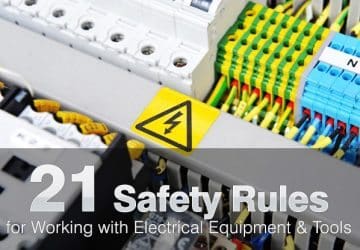Working principle of thermal motor protection relay
Thermal motor protection relays contain three bimetal strips together with a trip mechanism in a housing made of insulating material. The bimetal strips are heated by the motor current, causing them to bend and activating the trip mechanism after a… Read more
Mar 09, 2013 | By Edvard Csanyi
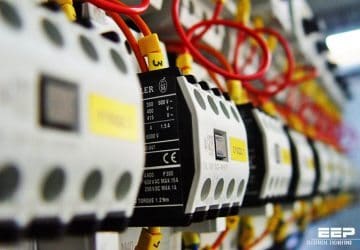
Connections Of Overcurrent Relay
This technical article is continued from first part: Types and Applications Of Overcurrent Relay It’s used for: 3-phase faults the overcurrent relays in all the 3-phases act. Phase to phase faults the relays in only the affected phases operate. Single… Read more
Feb 02, 2013 | By Jignesh Parmar

Types and Applications Of Overcurrent Relay
Distribution systems are susceptible to overcurrent flow within its components. Overcurrent may arise from abnormal system conditions, including overloads and short-circuit failures, or from typical system conditions, such as transformer inrush current and motor initiation. Consequently, under typical system conditions,… Read more
Feb 01, 2013 | By Jignesh Parmar

Comparison of Protection Relay Types
This comparison summarize characteristics of all protection relay types described in previously published technical articles: Using Protective Relay For Fighting Against Faults The Good Old Electromechanical Protective Relay The Solid State Relay (Static Relay) Overview Few Words About Digital Protection… Read more
Jan 23, 2013 | By Jignesh Parmar
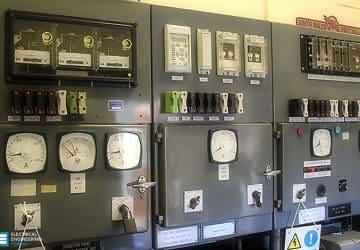
Discrimination between residual current circuit breakers (RCCBs)
The operating principle of the residual current release is basically the detection of an earth fault current, by means of a toroid transformer which embraces all the live conductors, included the neutral if distributed. In absence of an earth fault,… Read more
Jan 11, 2013 | By Edvard Csanyi

Flexibility and Reliability of Numerical Protection Relay
The first protection devices based on microprocessors were employed in 1985. The widespread acceptance of numerical technology by the customer and the experiences of the user helped in developing the second generation numerical relays in 1990. Conventional electromechanical and static… Read more
Dec 27, 2012 | By Jignesh Parmar

7 Golden Safety Rules for Working In HV Laboratory
Employees performing operations and testing work in high voltage laboratory are exposed to a greater hazard than most other employees. Safety rules MUST NOT be seen as a means of limiting our freedom, but should rather be looked upon as valuable… Read more
Dec 26, 2012 | By Edvard Csanyi

Few Words About Digital Protection Relay
Around 1980s the digital relay entered the market. Compared to the Solid State Relay, the digital relay takes the advantages of the development of microprocessors and microcontrollers. Instead of using analog signals, the digital relay converts all measured analog quantities… Read more
Dec 24, 2012 | By Jignesh Parmar

Short-Circuit Switching Capacity Definition
The switching capacity is the r.m.s value of a current at a given power factor cosφ as well as a given rated voltage at which a switchgear or a fuse can still shut-off under specified conditions in an operationally safe… Read more
Dec 20, 2012 | By Edvard Csanyi
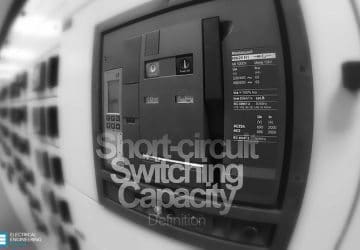
The Solid State Relay (Static Relay) Overview
The static relay is the next generation relay after electromechanical type.The Solid Static relays was first introduced in 1960’s. The term ‘static’ implies that the relay has no moving mechanical parts in it. Compared to the Electromechanical Relay, the Solid… Read more
Dec 19, 2012 | By Jignesh Parmar

The Good Old Electromechanical Protective Relay
This is the first generation oldest relaying system and they have been in use for many years. They have earned a well-deserved reputation for accuracy, dependability, and reliability. There are two basic types of operating mechanisms: Electromagnetic-attraction relay and Electromagnetic-induction… Read more
Dec 18, 2012 | By Jignesh Parmar

Using Protective Relay For Fighting Against Faults
Introduction to Protective Relay Working Principle of Protective Scheme What is Relay? Functions of Protective Relay Desirable qualities of protective relaying Terminology of protective relay History of Protective Relay Types of Relays Types of Relay based on Relay Operation Mechanism… Read more
Dec 17, 2012 | By Jignesh Parmar

Power Line Carrier Communication (PLCC)
Use of PLCC in modern electrical power system is mainly for telemetry and telecontrol. Tele means remote. Telemetry refers to science of measurement from remote location. Introduction Major goal/Application of PLCC Main Components of PLCC: Coupling Capacitor Line trap Unit… Read more
Dec 14, 2012 | By Asif Eqbal

Rogowski Coil Construction
Figure 1 shows the construction of a Rogowski coil, an air-core current transformer that is especially well suited to measuring ripple currents in the presence of a DC component or measuring pulsed currents. The raw output is proportional to the… Read more
Dec 13, 2012 | By Edvard Csanyi
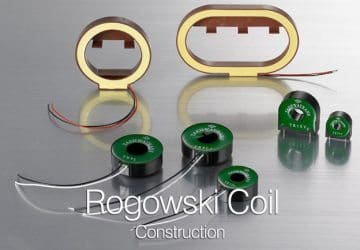
21 Safety Rules for Working with Electrical Equipment
A safe work environment is not always enough to control all potential electrical hazards. You must be very cautious and work safely. Safety rules help you control your and others risk of injury or death from workplace hazards. The good… Read more
Dec 12, 2012 | By Edvard Csanyi
